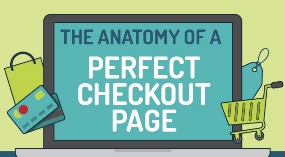If the COVID pandemic has taught us anything, it’s that there is always a need for “Plan B.”
Some people – even experts – will tell you if you want to succeed you need to always be in high gear, full throttle… and to a certain extent, this is true. However, even Ferraris come with brakes. There’s nothing more inspiring than full-on commitment and real passion, but you can achieve this all without being reckless. This is where having a plan B comes in very handy.
Why you need a plan B
It might seem obvious amid the Coronavirus disruption… but you need a plan B to deal with, well… the unexpected. Maybe it’s a supply chain issue; maybe it’s a lack of funding; maybe it’s an illness… or maybe it’s all of these at once. Yikes!!
If you didn’t have a plan B before February, you probably will have one (or more) from now on. For present-day entrepreneurs who don’t have a plan B, the only option is applying for government stimulus just to keep the lights on until you are on steady enough ground to move forward with your idea, innovation or startup.
To those who DID have a plan B, I tip my hat to you. You might still be seeking stimulus funding or an SBA loan, but it’s not to just survive, but to help you stay on track and come out of this endeavor with a solid plan for growth and success.
How to make a plan B
To be clear, “plan B” is not saying, “If my entrepreneurial idea doesn’t work, I’ll go find a job.” Rather, it is an essential part of your business plan that acts as an “audible” play you can call upon in a pinch if you are sideswiped by unforeseen obstacles, competitive market forces, consumer demand or natural disasters.
You can create a plan B that either augments or replaces plan A, depending on the circumstance. Here are some questions you can ask yourself to get started:
- What is the primary goal of my business? What problem am I trying to solve? Is there more than one way to complete the objective?
- Who am I serving? Is that subject to change? Who else can I serve with my idea/product?
- Is my location something that is static or flexible? What technology do I need for maximum flexibility?
- How can I communicate with my team and customers if my primary form of communication is disrupted?
- Where is my funding coming from? What other sources are available and how can I tap into them?
- What raw materials are necessary and what are some alternate sources for that supply?
This list is far from complete, but it is a good start to understanding what options you’ll need to consider and how your plan B can be implemented in any situation.
Business & Finance Articles on Business 2 Community
(68)




